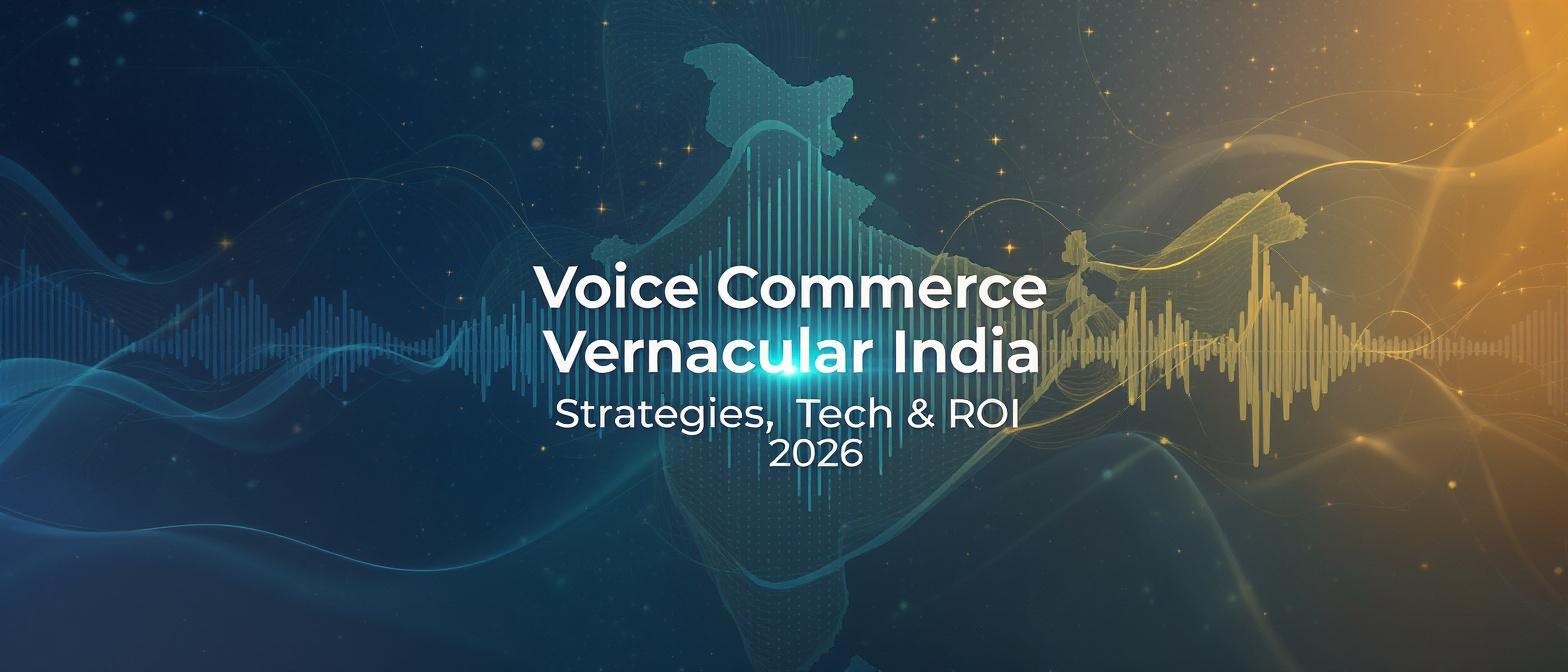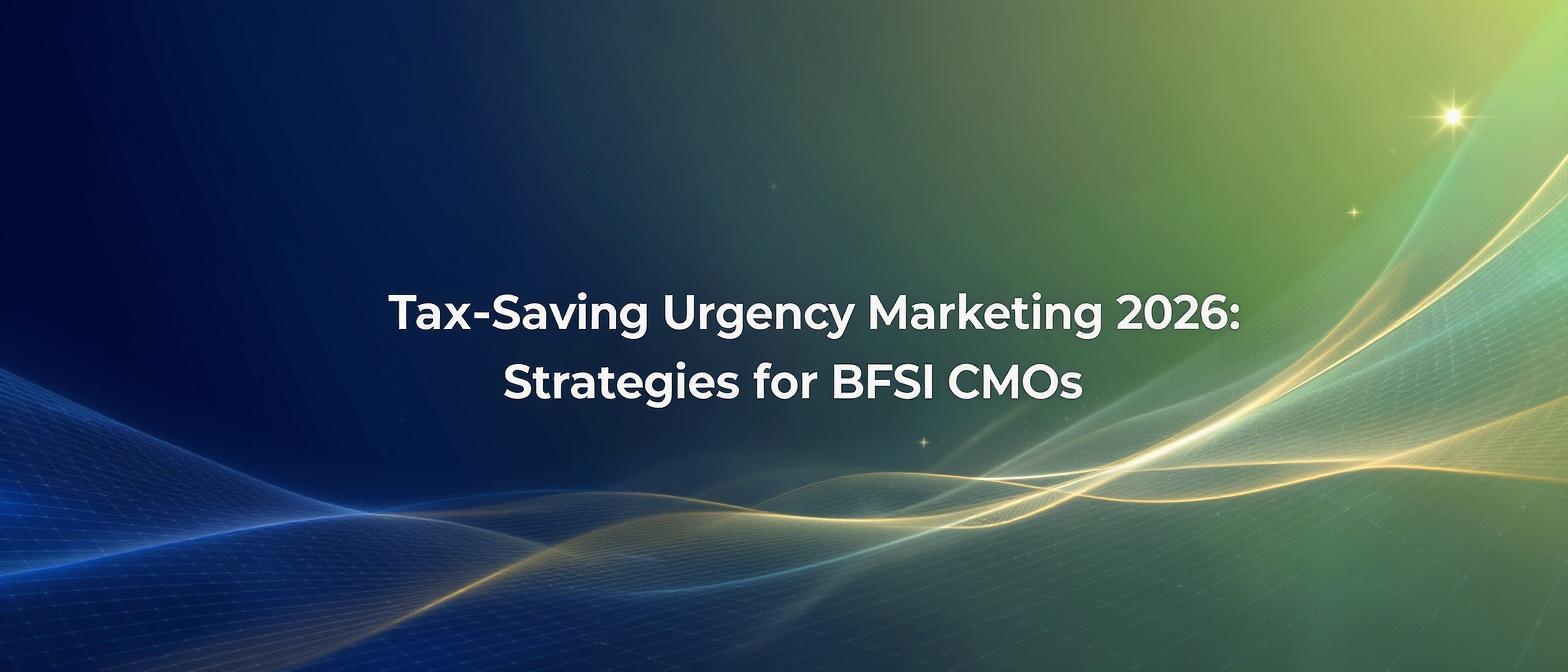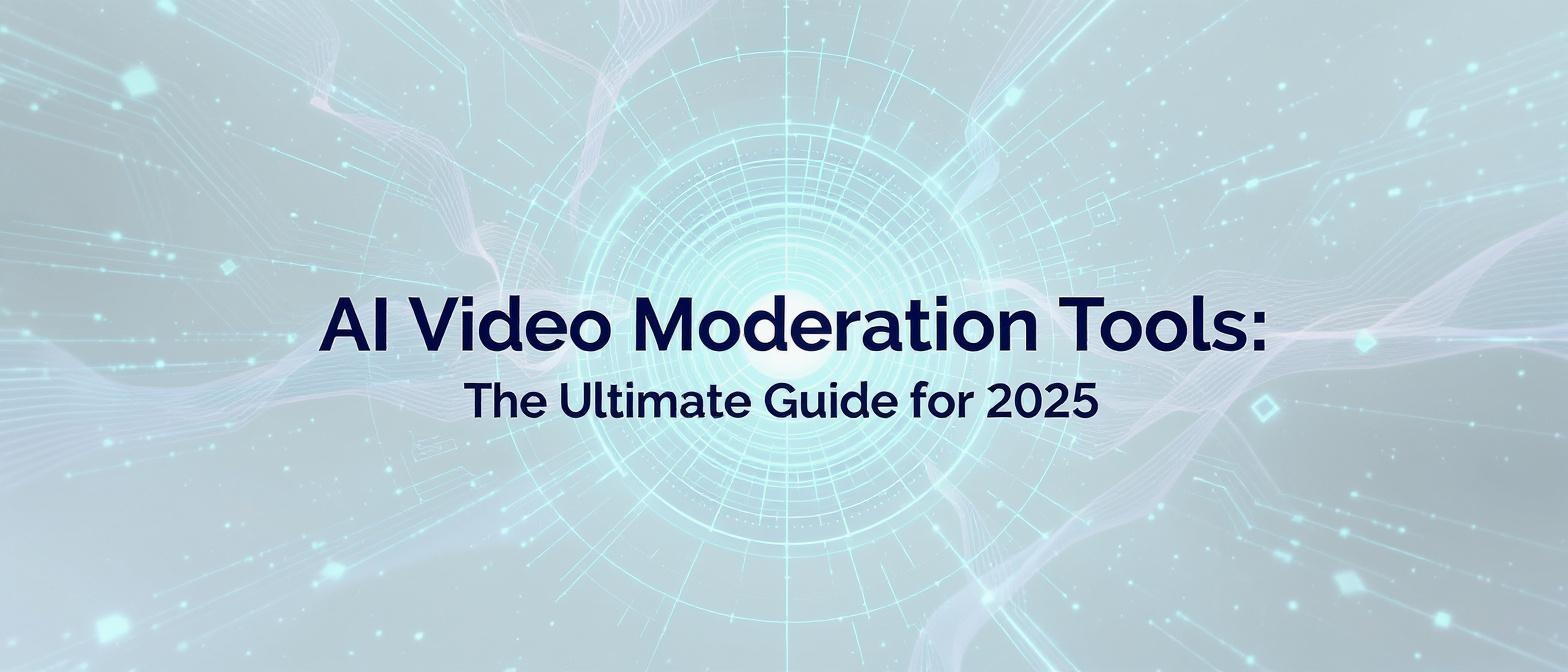Voice Commerce Vernacular India 2026: Your Guide to Winning the Next 650 Million Users
Estimated reading time: ~11 minutes
Key Takeaways
- Vernacular voice commerce is the fastest-growing channel for India's non-English internet users.
- Tier-2/3 cities drive over 67% of online orders, making voice-first experiences crucial for market expansion.
- Conversational AI and multilingual integrations enable seamless, personalized shopping journeys.
- Measuring ROI relies on metrics like conversion lift, average order value, and drop-off rate reduction.
- Enterprise-grade Generative AI platforms, including TrueFan AI, power instant, hyper-personalized campaigns at massive scale.
I. Introduction: The Unheard Opportunity in Indian E-Commerce
The future of Indian e-commerce has a voice. Voice commerce vernacular India 2026 represents the next frontier for digital growth, targeting a massive, untapped demographic. This evolution involves consumers using smart speakers and voice assistants to search for products, place orders, and redeem offers entirely through spoken commands. It’s a hands-free, intuitive interface for the digital world.
India is on the cusp of a linguistic digital revolution. With over 650 million vernacular internet users, the demand for non-English, voice-first experiences is surging. Projections show that by 2026, this user base will not just participate in but dominate the digital landscape, making regional language voice shopping a critical channel for market expansion. The market for speech recognition technology in India is expected to reach an astounding $5.12 billion by 2025, underscoring the massive investment and adoption underway.
This guide is for digital transformation leaders, CMOs, and marketing technologists. If you are focused on market expansion and unlocking growth in India’s tier-2 and tier-3 cities, understanding and implementing a voice commerce strategy is no longer optional. It’s the key to connecting with the next wave of digital consumers on their own terms, in their own language.
Source: https://www.nextmsc.com/news/india-voice-assistant-market, https://www.statista.com/outlook/tmo/artificial-intelligence/computer-vision/speech-recognition/india, https://www.futuremarketinsights.com/reports/voice-commerce-services-market, https://www.mxmindia.com/columns/indias-digital-surge-in-2026-a-billion-user-market-rewriting-the-rules-of-engagement/
II. What is Voice Commerce in a Vernacular Context?
At its core, “voice commerce” is simply speech-driven shopping. However, in the Indian context, its true power is unlocked when combined with vernacular languages. It allows users to engage in complex e-commerce activities—from product discovery to payment—in their preferred regional language, completely bypassing the barriers of typing and English literacy.
The vernacular focus is critical because India’s next growth phase is overwhelmingly non-metropolitan and non-English. By 2026, the 650 million-strong cohort of non-English speakers will be the primary drivers of voice-based digital interactions. This demographic shift necessitates a move away from text-heavy, English-first interfaces towards conversational, intuitive, and linguistically diverse platforms.
We are already seeing the emergence of specialized platforms designed to cater to this need. For instance, technologies like “IndicVoices” are being developed to cover India’s 22 official languages, empowering both rural and urban shopping journeys for first-time internet users. The explosive growth in this sector is fueled by a perfect storm: deepening smartphone penetration in rural areas, rapid advancements in conversational AI, and a burgeoning demand for content and commerce in regional languages. This convergence is setting the stage for regional language voice shopping to become a mainstream reality.
Source: https://www.nextmsc.com/news/india-voice-assistant-market, https://www.statista.com/outlook/tmo/artificial-intelligence/computer-vision/speech-recognition/india, https://www.futuremarketinsights.com/reports/voice-commerce-services-market, https://www.mxmindia.com/columns/indias-digital-surge-in-2026-a-billion-user-market-rewriting-the-rules-of-engagement/, https://www.grandviewresearch.com/horizon/outlook/voice-commerce-market/india, https://mlconference.ai/voicecon/the-rise-of-voice-commerce-in-india/
III. Key Technologies & Integrations Powering Vernacular Voice Commerce
To effectively tap into the voice commerce opportunity, businesses must understand and integrate a suite of powerful technologies. These tools form the backbone of a seamless, voice-first customer experience.
Smart Speaker Commerce Integration
The proliferation of devices like Amazon Alexa and Google Assistant has brought voice assistants into millions of Indian homes. For businesses, this means a direct channel for commerce. Integration involves using APIs to connect your product catalog and checkout process to these platforms, allowing users to say, “Alexa, order my usual groceries” or “Hey Google, find me the best deals on running shoes.” The key is leveraging the massive device reach of these tech giants and using their API hooks to build frictionless shopping experiences.
Conversational Shopping AI Personalization
This goes beyond simple command-and-response. Modern conversational AI uses machine learning to understand context, purchase history, and user preferences. A context-aware bot can engage in a natural dialogue, recommend products based on past behavior (I see you bought a blue kurta last month, would you like to see matching pajamas?), and securely process payments via voice commands. This level of AI personalization transforms a transactional process into a helpful, guided shopping journey.
Multilingual Voice Marketing Automation
Imagine running a marketing campaign that speaks to customers in their native tongue, automatically. This is the power of multilingual voice marketing automation. Using advanced triggers and workflows, you can send dynamic, localized voice messages or videos. Platforms like TrueFan AI enable the creation of content in over 175 languages, with features like perfect lip-sync ensuring authenticity. This allows brands to scale hyper-personalized communication across India’s diverse linguistic landscape without massive operational overhead.
Voice-Activated Offer Redemption
Simplicity drives adoption. Voice-activated offer redemption streamlines the promotional process, significantly improving user experience. The flow is incredibly intuitive: a user hears about an offer, says a command like “Redeem Diwali20,” and the system instantly validates the code and applies the discount to their cart. This removes the friction of manually typing coupon codes, reducing cart abandonment and boosting conversion rates.
Voice Search Product Discovery Videos
A significant challenge in e-commerce is conveying a product’s value through text and images alone, leading to high drop-off rates. An innovative solution is to embed short, powerful product demo videos that are delivered in response to a voice query. A user asking, “Show me how the new mixer-grinder works,” can receive an instant video walkthrough. This dynamic, visual engagement method provides immediate value, answers questions preemptively, and can dramatically reduce decision-making friction and drop-offs during the discovery phase. A 2025 trend report by HubSpot highlights that 58% of consumers find video more engaging than static content, a figure that is even higher among mobile-first vernacular users.
Source: https://www.futuremarketinsights.com/reports/voice-commerce-services-market, https://www.nextmsc.com/news/india-voice-assistant-market, https://www.grandviewresearch.com/horizon/outlook/voice-commerce-market/india, https://www.smart-academy.in/blog/digital-marketing-trends/
IV. Strategies for Tier-2/3 Market Expansion & Adoption
The real battlefield for India’s e-commerce future lies beyond the metros. Data shows that tier-2 and tier-3 cities already generate a staggering 67% of India’s online orders, yet this massive vernacular audience remains largely underserved by current digital experiences. Capturing this market requires a dedicated, voice-first strategy.
The Phased Language Support Strategy
Tackling India’s linguistic diversity can seem daunting. A practical approach is to prioritize languages based on market size and user concentration.
- Phase 1: The Top 8: Start by offering support for the top 8 most widely spoken regional languages, such as Hindi, Bengali, Telugu, Marathi, Tamil, Urdu, Gujarati, and Kannada. This covers a significant majority of the potential user base.
- Phase 2: Scale to 22+: Once the foundation is established, leverage scalable platforms like IndicVoices to expand support to all 22 official languages and beyond, ensuring maximum inclusivity.
Hyper-Local Offers via Voice Triggers
Personalization is most effective when it is relevant to the user’s immediate environment. Voice-triggered hyper-local offers can create powerful connections. Imagine a user receiving a voice message: “Hey Priya, your local kirana on MG Road has 20% off on your favorite biscuits today. Should I add it to your cart?” This requires integrating user data like location, past purchase history, and language preference to deliver offers that feel uniquely tailored and instantly valuable.
Campaign Blueprint: Vernacular Voice Shopping Campaigns
A successful campaign follows a clear, user-centric flow:
- Awareness: Place ads on regional social media platforms, local news portals, and audio streaming services, featuring a clear voice call-to-action (e.g., “Say ‘Hello Fresh’ to your voice assistant to get started”).
- Interaction: When the user speaks the command, a conversational AI bot initiates a dialogue in their native language, guiding them through product options or offer details.
- Conversion: The bot facilitates the entire purchase process via voice, from adding items to the cart to confirming the delivery address and completing the payment.
- Confirmation: An automated voice message or a personalized video confirms the order, providing a reassuring and delightful end to the transaction.
Retention Playbook: Conversational AI Strategies
Acquiring a new customer is only the first step. Conversational AI is a powerful tool for retention and building long-term loyalty.
- Automated Follow-ups: Send post-purchase voice messages asking for feedback or suggesting complementary products.
- Cart-Abandonment Nudges: If a user leaves items in their cart, a gentle, personalized voice reminder (Anjali, you left the red saree in your cart. It’s selling fast, shall I complete the order for you?) can effectively recover lost sales.
- Proactive Engagement: Use AI to track user behavior and send timely, relevant voice-based offers or content, keeping your brand top-of-mind.
Industry leaders are already proving this model. Zomato’s vernacular voice push has successfully engaged regional users in food discovery, while Goibibo’s in-app linguistic nudges, using voice-triggered campaigns, have set a benchmark for personalized travel booking.
Source: https://mlconference.ai/voicecon/the-rise-of-voice-commerce-in-india/
V. Measuring Impact & Proving Voice Commerce ROI
Investing in a new channel requires a clear understanding of its return on investment. For voice commerce, the impact is measurable, tangible, and significant. Tracking the right metrics is key to demonstrating its value and optimizing your strategy.
Key Metrics for Voice Commerce ROI Measurement
Focus on metrics that directly tie back to business objectives:
- Conversion Lift: Compare the conversion rates of users who engage with voice channels versus those who use traditional text-based interfaces.
- Drop-off Rate Reduction: Analyze at which stages of the funnel users typically abandon their journey and measure how voice interaction reduces these drop-offs.
- Average Order Value (AOV) Uplift: Track whether the personalized recommendations from conversational AI lead to users adding more items to their cart.
- Customer Satisfaction (CSAT) Scores: Survey users after a voice-enabled transaction to gauge their satisfaction with the experience’s ease and convenience.
The Right Attribution Model
Attribution can be complex, but a clear model is crucial. It involves tracking voice sessions from initiation to completion and mapping them to final orders within your CRM. Best practices for dashboards include visualizing the entire voice funnel, segmenting performance by language and region, and identifying the most effective voice triggers and conversation flows. Solutions like TrueFan AI demonstrate ROI through detailed analytics dashboards that correlate video engagement with conversion events, providing a clear line of sight from campaign activity to revenue.
Real-World Data Points
The proof is in the performance. Leading brands leveraging voice and personalized video have seen remarkable results:
- Zomato’s Mother’s Day Campaign: This initiative generated an incredible 354,000 unique, personalized videos in a single day, creating unprecedented user engagement and driving a record number of orders.
- Goibibo’s Travel Nudges: By sending personalized video messages via WhatsApp, Goibibo achieved a 17% higher message read-rate compared to standard text offers, leading to a significant uptick in conversions.
Analytics Integration
To enable real-time tracking, your analytics infrastructure must be prepared. This requires defining a clear data schema that captures key voice interaction events (e.g., intent recognized, product suggested, item added to cart). Integrating with platforms via API endpoints allows for a continuous flow of performance data, enabling marketers to make agile, data-driven decisions and optimize campaigns on the fly.
Source: https://www.futuremarketinsights.com/reports/voice-commerce-services-market, https://mlconference.ai/voicecon/the-rise-of-voice-commerce-in-india/
VI. Aligning with Enterprise-Grade Generative AI
As voice commerce scales, so does the need for a robust, secure, and highly capable technology backbone. Enterprise-grade Generative AI is the engine that powers hyper-personalization for millions of users, making it a critical component of any serious voice commerce strategy.
Scaling Personalization: The Zomato Case
The challenge of personalization is not just creating one perfect message, but creating millions of them. The “Scaling Personalization: How Zomato Delivered 354K Videos in One Day” case study is a masterclass in this. By feeding individual customer attributes (like their mother’s name) into dynamic video templates via API, Zomato and TrueFan AI created a one-to-one communication channel at a scale previously unimaginable. This is hyper-personalization in action.
The Future of Multilingual Marketing: A 175+ Language Edge
For a country as diverse as India, multilingual support is non-negotiable. Enterprise AI platforms must offer deep localization capabilities. TrueFan AI’s 175+ language support and Personalised Celebrity Videos allow brands to automatically render video and audio content in virtually any language, with perfect lip-sync and voice cloning. This ensures that a brand’s message is not just translated but is delivered with cultural and linguistic authenticity, which is essential for building trust with vernacular audiences.
Real-Time Personalization & Delivery
In the age of instant gratification, speed is everything. A user redeeming a voice-activated offer cannot wait minutes for their personalized confirmation. Advanced generative AI platforms offer sub-30-second rendering and delivery pipelines. This means a personalized video or audio message can be generated and sent via WhatsApp, SMS, or email almost instantly after a user action, creating a seamless and magical brand experience.
Security, Compliance, and Trust
As AI becomes more integrated into customer interactions, trust becomes the most valuable currency. Enterprises must partner with platforms that prioritize security and ethics. Look for certifications like ISO 27001 and SOC 2, which guarantee robust data protection. Furthermore, a consent-first model, where celebrities and users explicitly opt-in, and built-in moderation filters that reject harmful or inappropriate content, are vital for protecting consumers and ensuring brand safety in all AI-driven campaigns.
VII. Conclusion & Your Next Steps
The rise of voice commerce vernacular India 2026 is not a distant trend; it is an imminent market transformation. It represents the single greatest opportunity to connect with the 650 million vernacular internet users who will define the next decade of digital growth. By removing language and literacy barriers, voice commerce democratizes access to e-commerce, empowering a massive segment of the population to participate fully in the digital economy.
The technologies are mature, the strategies are proven, and the audience is ready. For CMOs, marketing technologists, and digital leaders, the time to act is now. The journey begins with a pilot initiative to understand the nuances of this new channel and its potential for your brand. Integrating smart speaker commerce, deploying conversational AI, and leveraging multilingual automation are the foundational pillars of a successful voice commerce strategy.
Don’t wait for your competitors to capture this market. Take the lead in embracing the voice revolution.
Ready to explore how generative AI can power your voice commerce initiatives? Request a Demo of TrueFan’s API-driven AI Platform Today and let’s build the future of conversational commerce together.
Frequently Asked Questions
1. What is the primary driver behind the growth of voice commerce in India?
The primary driver is the rapid adoption of the internet by over 650 million vernacular (non-English speaking) users, particularly in tier-2 and tier-3 cities. This demographic prefers voice-based interactions as they are more natural and bypass literacy or typing barriers, making voice the most intuitive interface for their digital journey.
2. Which industries are best suited to benefit from voice commerce?
Industries with high-frequency purchases and a need for convenience, such as e-commerce (fashion, electronics), grocery delivery, food ordering, travel, and financial services (bill payments, inquiries), are prime candidates. Essentially, any sector looking to improve accessibility and user experience for a broad audience can benefit significantly.
3. How does voice commerce improve customer experience?
It offers a faster, hands-free, and more intuitive way to shop. By allowing users to interact in their native language and using AI for personalized recommendations, voice commerce reduces friction in the buying process, making it feel more like a conversation with a helpful assistant than a transaction with a machine.
4. How can small and medium-sized businesses (SMBs) start with voice commerce?
SMBs can begin by optimizing their websites for voice search with long-tail, conversational keywords. They can also integrate with existing marketplaces that have voice capabilities or use accessible AI platforms that offer scalable solutions. Starting with a pilot project, such as a voice-activated FAQ or a simple ordering system for a few key products, is a great first step.
5. How can businesses ensure a secure voice commerce experience for their customers?
Security is paramount. Businesses must partner with technology providers that offer robust security protocols, such as end-to-end encryption for voice data and secure payment processing. Platforms like TrueFan AI, which are ISO 27001 and SOC 2 certified, provide enterprise-grade security and operate on a consent-first model, ensuring both data protection and user trust.
6. What is the difference between voice search and voice commerce?
Voice search is the act of using your voice to ask a question or find information (e.g., “Hey Google, what are the best phones under 20,000?”). Voice commerce is the next step, involving the entire transaction process—from discovery and ordering to payment and confirmation—conducted entirely through voice commands.




